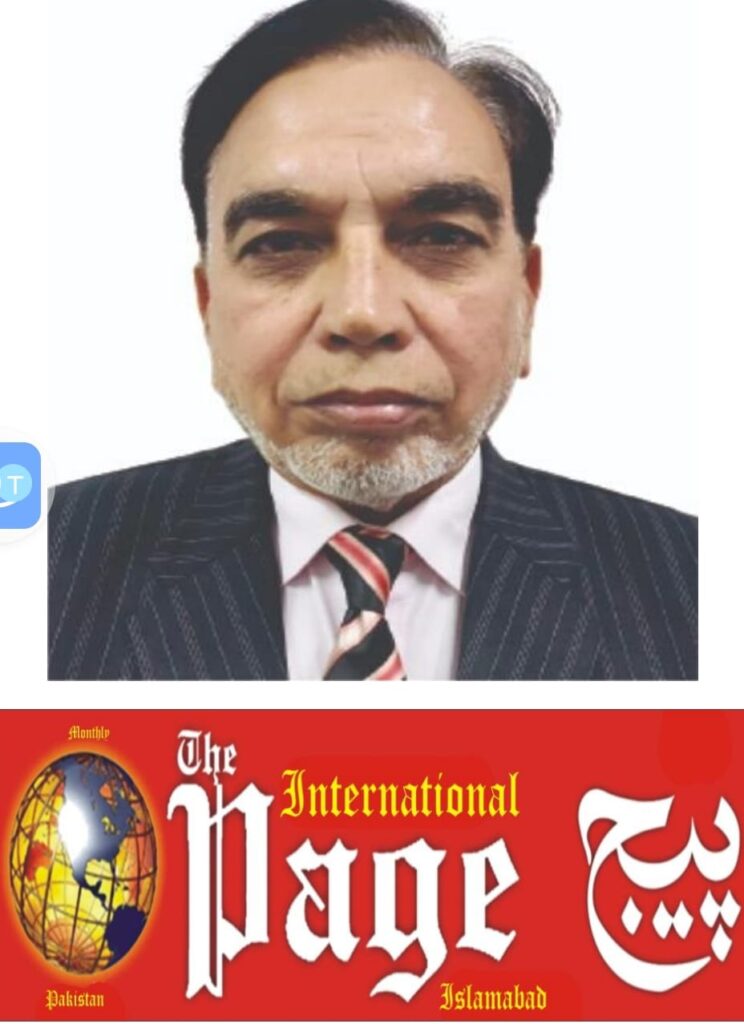Transforming Pakistan into a Global Mineral Resource Powerhouse: A Strategic Vision*

Rasheed Ahmad chughtai
Executive Summary*
Pakistan is endowed with vast untapped mineral wealth, including critical and rare earth minerals essential for modern technology, renewable energy, and defense industries. However, the country remains a raw material exporter, missing opportunities for value addition, industrialization, and economic growth. By shifting towards a policy of mineral beneficiation and processing, Pakistan can position itself as a global leader in mineral resources, attract foreign investment, and strengthen strategic partnerships with key players like the USA, China, and the West.
This report outlines Pakistan’s mineral potential, global demand trends, and strategic steps needed to transition from resource extraction to a value-added industrial economy.
Pakistan’s Mineral Wealth: An Untapped Opportunity*
Pakistan possesses over 50 types of exploitable minerals, including:
- Copper & Gold (Reko Diq – one of the world’s largest undeveloped copper-gold deposits, worth over $500 billion)
- Lithium (Potential reserves in KP and Punjab, critical for electric vehicles and batteries)
- Iron Ore (Balochistan’s Dilband reserves estimated at 200 million tons)
- Rare Earth Elements (REEs) (Used in electronics, defense, and renewable energy)
- Chromite, Coal, and Gypsum (Key for steel, energy, and construction industries)
Despite this wealth, Pakistan’s mining sector contributes only 2.5% to GDP, compared to 10-15% in mineral-rich nations like Australia and Chile.
Global Demand & Strategic Importance*
1. The West’s (USA & EU) Interest in Critical Minerals*
- The US Inflation Reduction Act (IRA) 2022 prioritizes securing critical minerals outside China, offering incentives for friendly nations.
- The EU’s Critical Raw Materials Act (2023) aims to reduce dependency on China by sourcing 10% of minerals domestically and 50% from allies by 2030.
- Pakistan’s lithium and copper reserves could make it a key supplier for EV batteries, semiconductors, and defense tech.
2. China’s Dominance & Pakistan’s Role in BRI* - China controls 80% of global rare earth processing.
- Through the China-Pakistan Economic Corridor (CPEC), Beijing seeks mineral access, but Pakistan must negotiate better terms for local processing.
- Saudi Arabia and UAE are also investing in Pakistan’s mining sector, seeking diversification from oil.
Challenges Holding Pakistan Back*
- Lack of Infrastructure – Insufficient refining plants, energy shortages, and poor transport networks.
- Outdated Policies – Weak regulatory frameworks, corruption, and lack of incentives for value addition.
- Geopolitical Risks – Security concerns in Balochistan deter investors.
- Dependency on Raw Exports – Most minerals are exported unprocessed, losing 90% of potential value.
Strategic Roadmap for Pakistan’s Mineral Revolution*
1. Government Reforms & Policy Shifts*
- Ban on Unprocessed Mineral Exports (Like Indonesia’s nickel policy, which boosted its EV battery industry).
- Tax Incentives & Ease of Doing Business – Special Economic Zones (SEZs) for mineral processing.
- Strengthening Regulatory Bodies – Transparent auctions and contracts (e.g., Reko Diq settlement with Barrick Gold).
2. Attracting Foreign Investment & Partnerships* - Joint Ventures with US & EU Firms – Leverage Western demand for non-Chinese minerals.
- CPEC Phase-II Focus on Mining – Ensure tech transfer, not just extraction.
- Saudi Arabia’s $10B Mining Investment Pledge – Fast-track projects like Mansehra’s copper reserves.
3. Building Domestic Capacity*
- Establish Refining Hubs – Copper, lithium, and steel plants under public-private partnerships.
- Skilling Workforce – Technical training in mining engineering and metallurgy.
- R&D in Mineral Tech – Collaborate with global universities for advanced extraction methods.
4. Geostrategic Positioning* - Join the Minerals Security Partnership (MSP) – A US-led alliance for critical mineral supply chains.
- Leverage GSP+ Status with EU – Export processed minerals tariff-free.
- Counter China’s Monopoly – Offer alternative supply chains to the West.
Call to Action For the Government:*
- Implement mandatory domestic processing laws.
- Develop infrastructure (roads, energy, ports) for mining zones.
- Ensure transparency in contracts* to regain investor trust.
For Investors & Global Partners:* - US & EU: Invest in Pakistan’s mining sector under IRA and CRM Act benefits.
- China: Shift from extraction to refining partnerships under CPEC.
- Gulf Nations:* Fund mining projects in exchange for long-term supply deals.
For Entrepreneurs & Youth:*
- Innovate in mineral tech startups (e.g., lithium recycling).
- Push for public-private collaborations in R&D.
Conclusion*
Pakistan stands at a pivotal moment—its mineral wealth can either fuel a new industrial revolution or remain underutilized due to outdated policies. By enforcing value-addition mandates*, securing *strategic alliances with the US, China, and the West, and fostering local expertise, Pakistan can emerge as a global mineral powerhouse.
The time to act is now—before another nation monopolizes the next gold rush of the 21st century: *critical minerals.
Rasheed Ahmad Chughtai
(Economic Strategist & Policy Analyst)
Chief Editor
The Page International
References & Latest Data Sources:*
- US Geological Survey (2024) – Critical Minerals List
- World Bank Report on Pakistan’s Mining Potential (2023)
- Barrick Gold’s Reko Diq Project Updates (2024)
- EU Critical Raw Materials Act (2023)
- Saudi-Pak Mining Deals (2024)
www.rachughtai.com.


